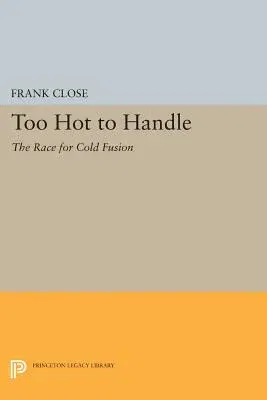Frank Close, a leading physicist and talented popular science writer,
reveals the true story of the cold fusion controversy--a story ignored
until now in spite of the glare of publicity surrounding Martin
Fleischmann and Stanley Pons. On March 23, 1989, these two Utah
scientists held an astonishing press conference, maintaining that they
had succeeded, working in secret, in harnessing atomic fusion. What was
the basis for their claims to have achieved cold fusion in a test tube
in a basement laboratory, while other scientists--using magnets as big
as houses and temperatures hotter than those in the center of the
sun--were failing to produce as much power as they were using? Why did
Fleischmann and Pons proclaim their "discovery" at a news conference,
when first announcements of scientific results are almost always made
within the scientific community? Why did the full-blown media event
inspired by their initial report cause governments to reorient their
research programs in hopes of cornering the "new technology"? And why
did some scientists recklessly abandon their traditional painstaking
methods in haste to be first to prove or discredit the experiment?
Acquainted at first hand with investigations of cold fusion on two
continents, Close is uniquely qualified to probe the motivations behind
Fleischmann's and Pons's startling assertions and to explore the
intellectual and political turmoil that surrounded the cold fusion
debate.
Originally published in 1991.
The Princeton Legacy Library uses the latest print-on-demand
technology to again make available previously out-of-print books from
the distinguished backlist of Princeton University Press. These editions
preserve the original texts of these important books while presenting
them in durable paperback and hardcover editions. The goal of the
Princeton Legacy Library is to vastly increase access to the rich
scholarly heritage found in the thousands of books published by
Princeton University Press since its founding in 1905.

